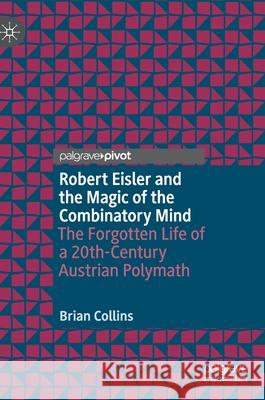Robert Eisler and the Magic of the Combinatory Mind: The Forgotten Life of a 20th-Century Austrian Polymath » książka
topmenu
Robert Eisler and the Magic of the Combinatory Mind: The Forgotten Life of a 20th-Century Austrian Polymath
ISBN-13: 9783030612283 / Angielski / Twarda / 2021 / 157 str.
Robert Eisler and the Magic of the Combinatory Mind: The Forgotten Life of a 20th-Century Austrian Polymath
ISBN-13: 9783030612283 / Angielski / Twarda / 2021 / 157 str.
cena 261,63
(netto: 249,17 VAT: 5%)
Najniższa cena z 30 dni: 250,57
(netto: 249,17 VAT: 5%)
Najniższa cena z 30 dni: 250,57
Termin realizacji zamówienia:
ok. 22 dni roboczych
Bez gwarancji dostawy przed świętami
ok. 22 dni roboczych
Bez gwarancji dostawy przed świętami
Darmowa dostawa!
Kategorie:
Kategorie BISAC:
Wydawca:
Palgrave MacMillan
Język:
Angielski
ISBN-13:
9783030612283
Rok wydania:
2021
Wydanie:
2021
Ilość stron:
157
Waga:
0.36 kg
Wymiary:
21.01 x 14.81 x 1.12
Oprawa:
Twarda
Wolumenów:
01
Dodatkowe informacje:
Wydanie ilustrowane











